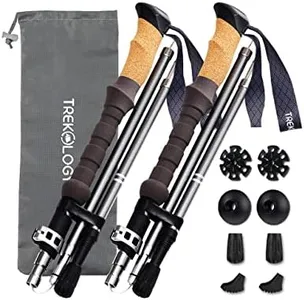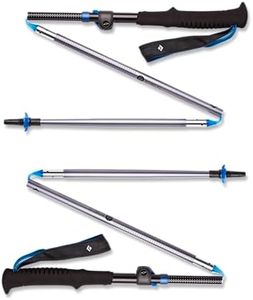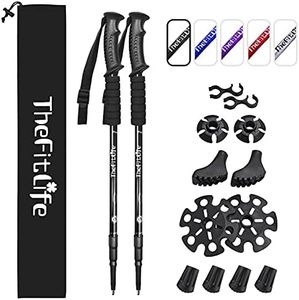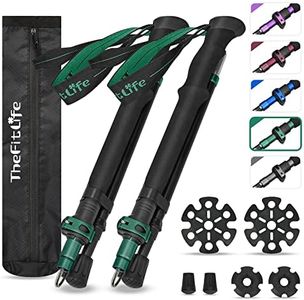We Use CookiesWe use cookies to enhance the security, performance,
functionality and for analytical and promotional activities. By continuing to browse this site you
are agreeing to our privacy policy
10 Best Walking Poles For Seniors
From leading brands and best sellers available on the web.Buying Guide for the Best Walking Poles For Seniors
When choosing walking poles for seniors, it's important to focus on comfort, stability, and ease of use. The right poles can make walking safer and more enjoyable by providing extra support, improving balance, and reducing strain on joints. It's a good idea to understand the different features before making a choice, so that the poles fit the user’s height, hand strength, and walking environment perfectly.Pole MaterialThe material of the walking pole affects its weight, strength, and absorption of shock. Most walking poles are made from either aluminum or carbon fiber. Aluminum poles tend to be a bit heavier but are very sturdy and durable, making them a safe choice for most seniors. Carbon fiber poles are lighter and excellent at absorbing vibration, which can make walking more comfortable, but they are usually a bit more expensive and can be less durable if used on rough surfaces. If you need maximum stability, aluminum can be suitable; if weight and joint comfort are a priority, carbon fiber is worth considering.
Grip TypeThe grip is the part you hold onto, and it comes in materials like cork, rubber, or foam. Cork grips are comfortable, absorb sweat, and mold to your hands over time; rubber grips offer excellent grip and are good for wet conditions, while foam grips are soft and comfortable but less durable. For seniors with weaker grip or arthritis, a contoured or ergonomic grip can provide extra comfort and reduce hand fatigue during longer walks.
AdjustabilitySome poles are adjustable in length, while others are fixed. Adjustable poles can be collapsed for storage, changed to suit different heights, or to accommodate various walking terrains. This is particularly useful if you plan to use the poles on slopes or share them with others of different heights. Fixed-length poles can be slightly lighter and simpler but lack this flexibility. If you want more versatility and the perfect fit, go for adjustable poles.
WeightThe weight of the pole can make a big difference, especially if you’re using them for long periods. Lighter poles are easier to swing and carry, reducing arm fatigue, but sometimes very lightweight models sacrifice durability. If you walk mostly on paved surfaces and value ease of movement, lighter poles are ideal. If you sometimes lean heavily on your poles for support or walk off-road, a slightly heavier but sturdier model may be best.
Shock AbsorptionSome walking poles have built-in shock absorption, often called anti-shock, which is a spring mechanism inside the pole. This feature helps cushion your wrists and elbows by absorbing impacts, which is particularly helpful for seniors with joint issues or who walk on hard surfaces. If you have sensitive joints or plan to walk on concrete or rocky paths, shock absorption is a helpful feature. However, on softer ground, anti-shock may be less necessary.
Tip TypeThe tip is the end of the pole that touches the ground. Standard tips are made of durable metal for grip on soil or trails, but rubber tip covers can be added for use on pavement or indoors to prevent slipping and protect surfaces. Paying attention to the tip design is important if you often switch between outdoor and urban environments. If your walks are mainly on sidewalks, look for poles with good quality rubber tips.
Wrist StrapsWrist straps help keep the poles secure and prevent dropping, and they take some weight off your grip. Adjustable, padded straps are best, as they provide comfort and allow you to quickly release the pole if needed. If you have reduced hand strength or dexterity, look for straps that are easy to adjust and soft enough to avoid causing irritation.
















